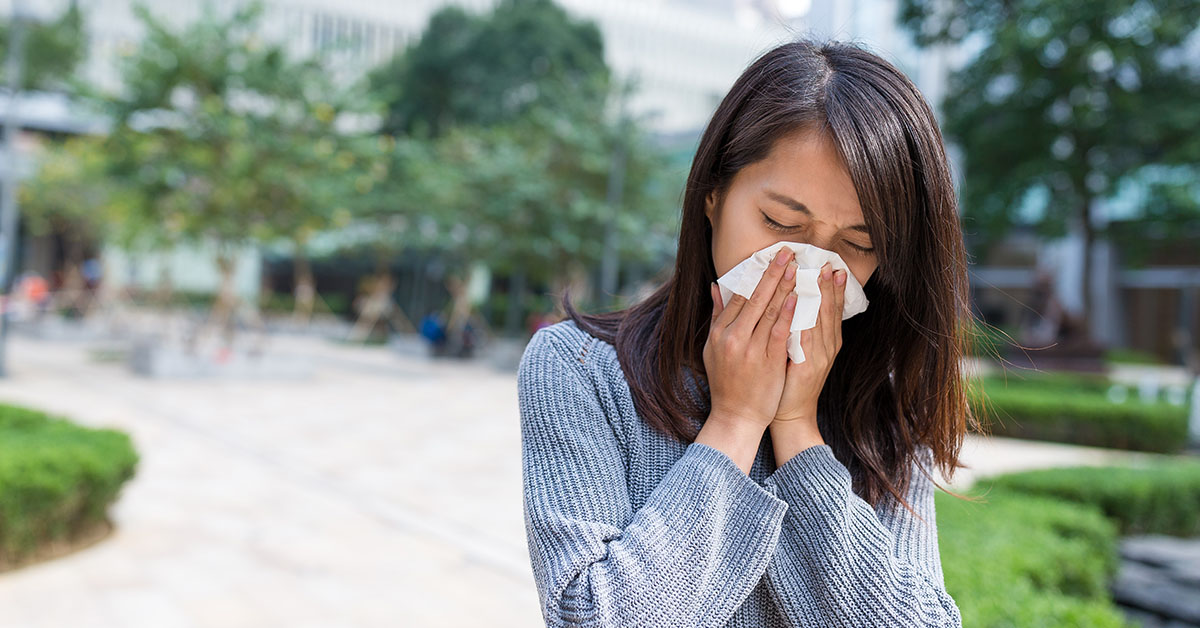
Allergies – Spring is the Season
The immune system is responsible for protecting the body from disease. The immune system functions by recognizing foreign invaders (bacteria, parasites, and fungi) and then eliminating them from the body via a specialized immune response. Sometimes, the immune system can mistakenly recognize a harmless substance as a foreign invader and subsequently mount an immune response against it. The substances that cause this type of immune response are called allergens. The immune response itself is called an allergic reaction.
Symptoms
Allergy symptoms can range from mild to severe and are almost always aggravating and annoying. They usually interfere with daily activities and sometimes sleep. Symptoms affect the sinus, airway, and nasal passages. The most commonly seen allergy symptoms include the following:
- Eyes – Redness, swelling, watering, itching
- Nose – Sneezing, itching, running
- Face – Swelling, itching
Controlling allergy symptoms is a three-step process. The first and perhaps most important step is identifying what’s causing symptoms.
Causes
- Pollen – The increase in temperature brought on by the changing of winter to spring causes trees to pollinate. Pollen that is released from trees can travel for miles on windy days. For many patients, breathing air that is saturated with pollen can trigger allergy symptoms.
- Mold – Rain followed by warm spring weather causes mold to release spores. Like pollen, spores can be carried by wind, saturate the air, and cause patients to experience allergy symptoms.
Monitoring weather patterns and corresponding allergies symptoms can give patients important clues regarding what they are allergic to. If the cause of allergies can’t be found in this manner, making an appointment with an allergy specialist is recommended. A medical history, physical exam, and possibly an allergy test can be used to pinpoint the exact cause of allergies.
Preventative Measures
The best way for patients to protect themselves from allergies is to take numerous measures to prevent them from occurring. These measures include the following:
- Close doors and windows when the temperature begins to change
- Avoid yard work or outdoor activities on windy and wet days
- Purchase and use air conditioning unit allergy filters
- Wash your clothes immediately after returning from being outside for an extended period of time
Patients who are dedicated to preventing allergies are usually successful in doing so. If allergies can’t be prevented, there are several treatment options that can be used to help manage symptoms.
Treatment Options
The most common and effective treatment options for spring allergies include the following:
- Antihistamines – Medications that block the release of the histamine chemical responsible for causing allergy symptoms.
- Decongestants – Medications that shrink the lining of the nasal passages to prevent nasal airway symptoms.
- Corticosteroid nasal sprays – Medications that quickly decrease inflammation associated with an allergic response.
- Eye drops – Simple solutions contain medications that prevent eye redness, drying, and swelling.
There are numerous over-the-counter and prescription medications available. Patients may need to try a few before they find one that works best. Or, patients can seek treatment from an allergy specialist who can prescribe a personalized treatment plan.
Conclusion
Recognizing spring allergy symptoms and causes is the first part of finding an allergy solution. The second part is preventing allergies and using available treatment options when symptoms present. This type of holistic approach will keep you allergy free so you can enjoy the spring season this year.
